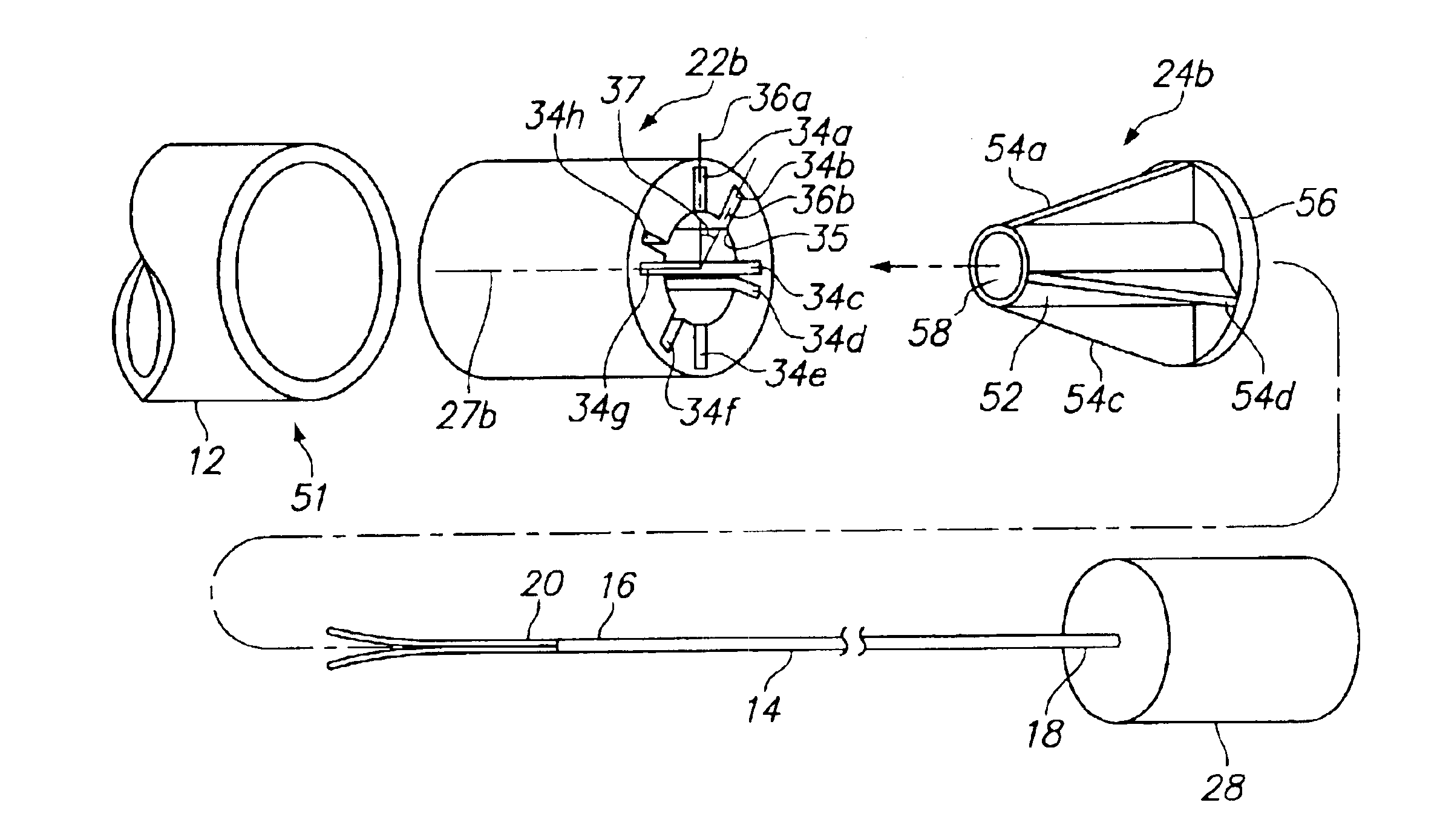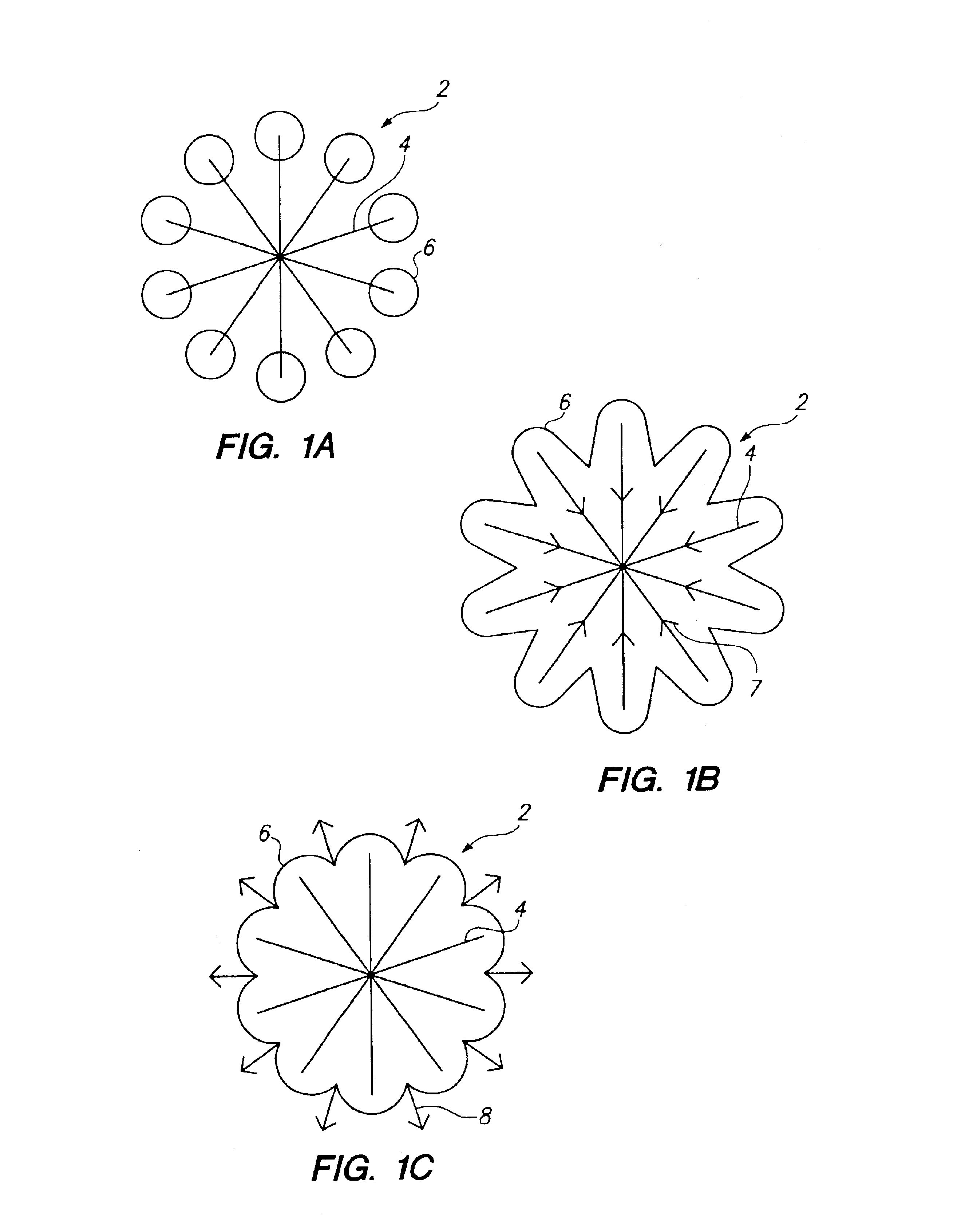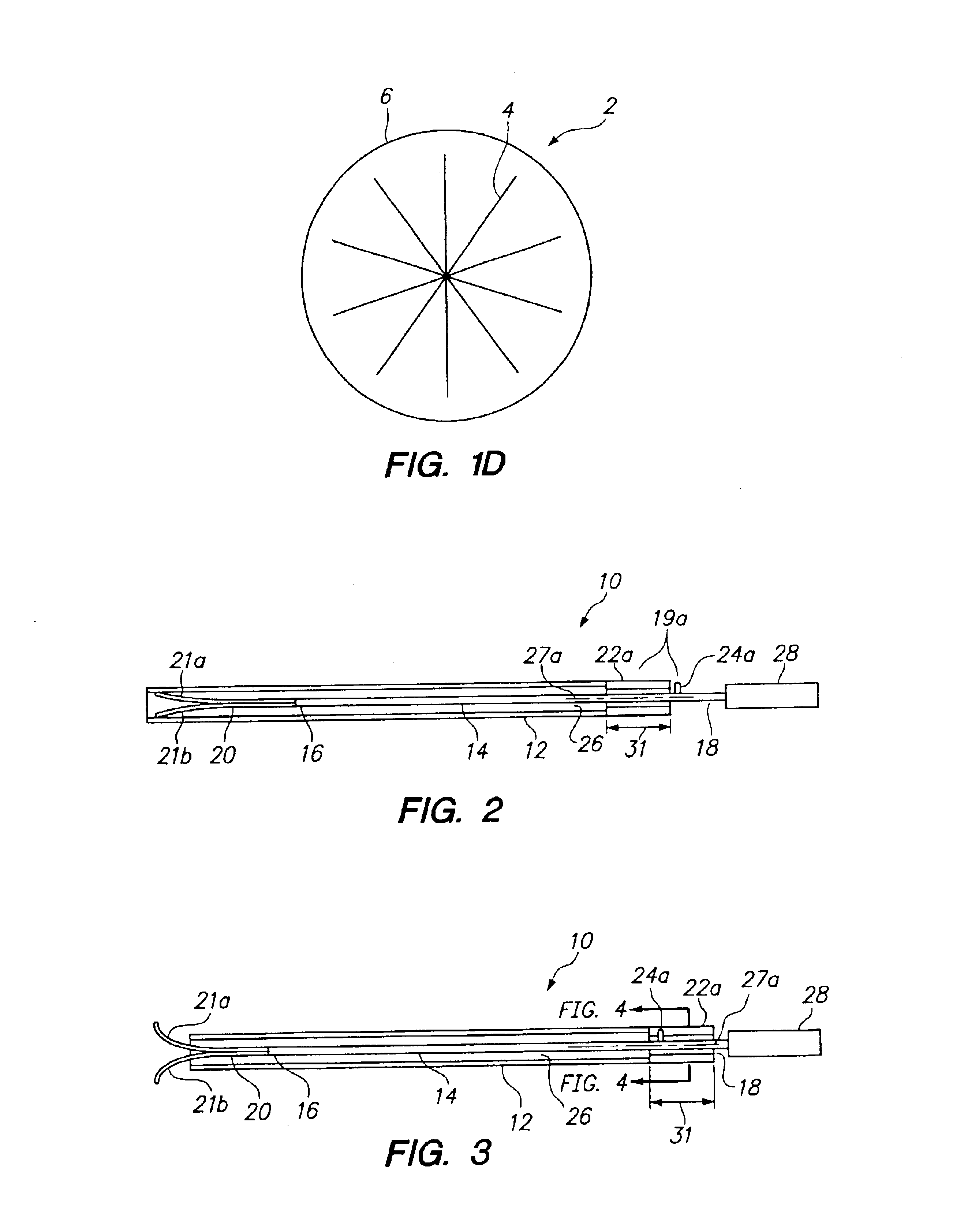Angle indexer for medical devices
a technology of angular indexers and medical devices, which is applied in the direction of medical science, surgery, diagnostics, etc., can solve the problems of reducing the electrical conductivity of the rf, limiting the volume of tissue, and difficult to achieve the desired thermal lesion b>6/b> illustrated in fig. 1d, and achieves the effect of facilitating the delivery of the operative elemen
- Summary
- Abstract
- Description
- Claims
- Application Information
AI Technical Summary
Benefits of technology
Problems solved by technology
Method used
Image
Examples
Embodiment Construction
[0045]Referring to FIG. 2, a probe assembly10 constructed in accordance with a first preferred embodiment of the present invention is shown. The probe assembly 10 includes a tubular element, such as a cannula 12, an elongate member, such as a shaft 14, having a distal end 16 and a proximal end 18, an operative element 20 carried on the distal end 16 of the shaft 14, and an angle indexing apparatus 19. The angle indexing apparatus 19 includes an indexer 22a mounted to the proximal end of the cannula 12, and an index-key 24a mounted to the proximal end 18 of the shaft 14. As used in this specification, the index-key 24 refers to the component of the indexing apparatus 19 that is coupled to (and therefore, associated with) the shaft, or other part(s) of the probe assembly that carries the operative element 20. The shaft 14 is coaxially surrounded by the cannula 12 and is capable of being advanced or retracted coaxially within a lumen 26 of the cannula 12. The probe assembly 10 optional...
PUM
 Login to View More
Login to View More Abstract
Description
Claims
Application Information
 Login to View More
Login to View More - R&D
- Intellectual Property
- Life Sciences
- Materials
- Tech Scout
- Unparalleled Data Quality
- Higher Quality Content
- 60% Fewer Hallucinations
Browse by: Latest US Patents, China's latest patents, Technical Efficacy Thesaurus, Application Domain, Technology Topic, Popular Technical Reports.
© 2025 PatSnap. All rights reserved.Legal|Privacy policy|Modern Slavery Act Transparency Statement|Sitemap|About US| Contact US: help@patsnap.com



